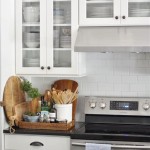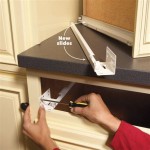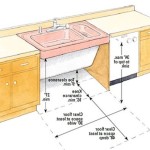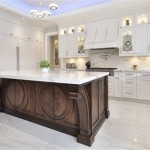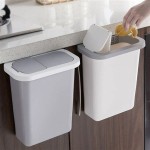Standard Size Of Kitchen Countertops
Kitchen countertops are a crucial element of kitchen design, impacting both aesthetics and functionality. Understanding the standard dimensions of kitchen countertops is essential for homeowners, designers, and contractors to ensure a comfortable and efficient workspace. Deviations from these standards are possible, but often come with increased costs and potential design challenges. The following information details the typical dimensions and considerations for kitchen countertops.
Standard Countertop Depth
The standard depth, or the measurement from the front edge to the back edge against the wall, of a kitchen countertop is 25 inches. This depth provides adequate working space for most kitchen tasks, including food preparation and appliance placement. This measurement allows for the typical base cabinet depth of 24 inches, leaving a 1-inch overhang at the front for comfortable standing and preventing spills from dripping directly onto the cabinet doors.
The 25-inch depth also accommodates standard kitchen sinks and cooktops. Most sinks are designed to fit within this depth, with the faucet placement typically located towards the back. Cooktops, whether gas or electric, also adhere to this standard, ensuring seamless integration into the countertop surface.
However, variations in countertop depth occur in specific situations. For instance, island countertops, which are often larger than perimeter countertops, may have depths exceeding 25 inches. Additionally, breakfast bars or seating areas incorporated into countertops might extend beyond the standard depth to provide adequate legroom. In these cases, the overhang, the amount the countertop extends beyond the cabinet base, is crucial for comfort and safety.
When planning for a countertop depth greater than 25 inches, it's important to consider the overall kitchen layout and traffic flow. Excessive depth could obstruct movement, especially in smaller kitchens. Conversely, insufficient depth might compromise functionality and comfort. Consulting with a kitchen designer or contractor is recommended to determine the optimal depth for specific needs and spatial constraints.
Furthermore, the thickness of the countertop material can influence the overall depth perception. Thicker materials, such as granite or quartz, might visually appear deeper than thinner materials like laminate, even if the actual depth is the same. This visual effect should be factored into the design process, particularly when selecting materials and finishes.
The standard 25-inch depth is a widely accepted guideline, but it's not a rigid rule. Flexibility is possible, but careful consideration should be given to the implications of deviating from this standard. A thorough assessment of user needs, space limitations, and aesthetic preferences is crucial for achieving a functional and visually appealing kitchen design.
Standard Countertop Height
The standard height of kitchen countertops from the finished floor is 36 inches. This height is designed to provide a comfortable working surface for individuals of average height. It allows for a natural elbow bend while performing tasks such as chopping vegetables or washing dishes, minimizing strain and fatigue.
The 36-inch height is also closely related to the standard height of base cabinets, which are typically 34.5 inches tall. The remaining 1.5 inches is accounted for by the countertop thickness. This combination ensures a consistent and ergonomic work surface throughout the kitchen.
However, the standard countertop height might not be suitable for everyone. Individuals who are significantly taller or shorter than average might find this height uncomfortable. In such cases, adjusting the countertop height to accommodate individual needs is possible. This is often achieved by modifying the height of the base cabinets or by using custom-built cabinets.
Adjusting the countertop height requires careful consideration to maintain proper ergonomics. Raising the countertop too high could lead to shoulder and neck strain, while lowering it too much might cause back pain. Consulting with an occupational therapist or kitchen designer can help determine the optimal height for individual needs and preferences.
In some kitchens, varying countertop heights are intentionally incorporated to create specialized work zones. For example, a lower countertop section might be designated for baking or kneading dough, while a higher section could serve as a breakfast bar or standing workspace. This approach can enhance functionality and cater to specific tasks.
When planning for varying countertop heights, it's essential to consider the transitions between different levels. Gradual transitions are generally preferred over abrupt changes to maintain visual harmony and prevent tripping hazards. The layout of appliances and fixtures should also be carefully planned to ensure they are appropriately positioned relative to the countertop height.
The standard 36-inch countertop height is a widely recognized guideline, but it's important to recognize that individual needs and preferences can vary. Customizing the countertop height to accommodate specific requirements can significantly enhance the comfort and functionality of the kitchen.
Standard Countertop Thickness
The standard thickness of kitchen countertops varies depending on the material used. For granite and quartz countertops, the most common thicknesses are 1 ¼ inches (3 centimeters) and ¾ inches (2 centimeters). Laminate countertops typically range from ¾ inches to 1 ½ inches thick, while solid surface materials like Corian can vary from ½ inch to 1 inch thick.
The thickness of the countertop material affects its durability, appearance, and cost. Thicker materials generally offer greater strength and resistance to impact and heat. They also tend to create a more substantial and luxurious aesthetic. However, thicker materials are typically more expensive and require stronger cabinet support.
The choice of countertop thickness should be based on a balance of aesthetic preferences, budget considerations, and functional requirements. For high-traffic kitchens or areas prone to heavy use, selecting a thicker and more durable material might be prudent. In less demanding environments, thinner materials can provide a cost-effective and visually appealing alternative.
The edge profile of the countertop can also influence the perceived thickness. Certain edge profiles, such as a waterfall edge or a bullnose edge, can make a countertop appear thicker than it actually is. Conversely, a square edge or a pencil edge can create a more streamlined and minimalist appearance.
When selecting a countertop thickness, it's important to consider the weight of the material and the ability of the base cabinets to support it. Thicker and heavier materials require stronger cabinet frames and supports to prevent sagging or damage. Consulting with a cabinet installer or contractor is recommended to ensure proper structural integrity.
Furthermore, the thickness of the countertop can affect the height of the backsplash. A thicker countertop will reduce the available space for the backsplash, while a thinner countertop will allow for a taller backsplash. This relationship should be considered when planning the overall aesthetic of the kitchen.
The standard countertop thickness is not a fixed value, but rather a range that varies depending on the material and design considerations. Selecting the appropriate thickness requires careful evaluation of aesthetic preferences, budget limitations, and functional requirements. A well-chosen countertop thickness can enhance the beauty, durability, and functionality of the kitchen.
In summary, understanding standard dimensions for kitchen countertops, including depth, height, and thickness, is critical for achieving both functional and aesthetically pleasing kitchen spaces. While these standards serve as helpful guidelines, adjustments are possible and sometimes necessary to accommodate individual needs and spatial constraints. Careful planning and consultation with professionals can ensure optimal results.

Standard Kitchen Counter Depth Hunker Cabinet Dimensions Cabinets Height

Kitchen And Dining Area Measurements Standards Guide

What Is The Standard Width Of A Kitchen Countertop Hunker Outdoor Countertops Island Dimensions Tops

Kitchen Ergonomics And Height Of Your Marble Countertop

What Is The Standard Depth Of Countertops Lx Hausys

Standard Kitchen Dimensions For Your Designcafe

A Homeowner S Guide To Kitchen Counter Height And Depth

Tips On Measuring Your Kitchen Countertops For An Accurate Quote

Your Kitchen Renovation Measured For Perfection Rona

What Is The Standard Depth Of Kitchen Countertops
Related Posts


